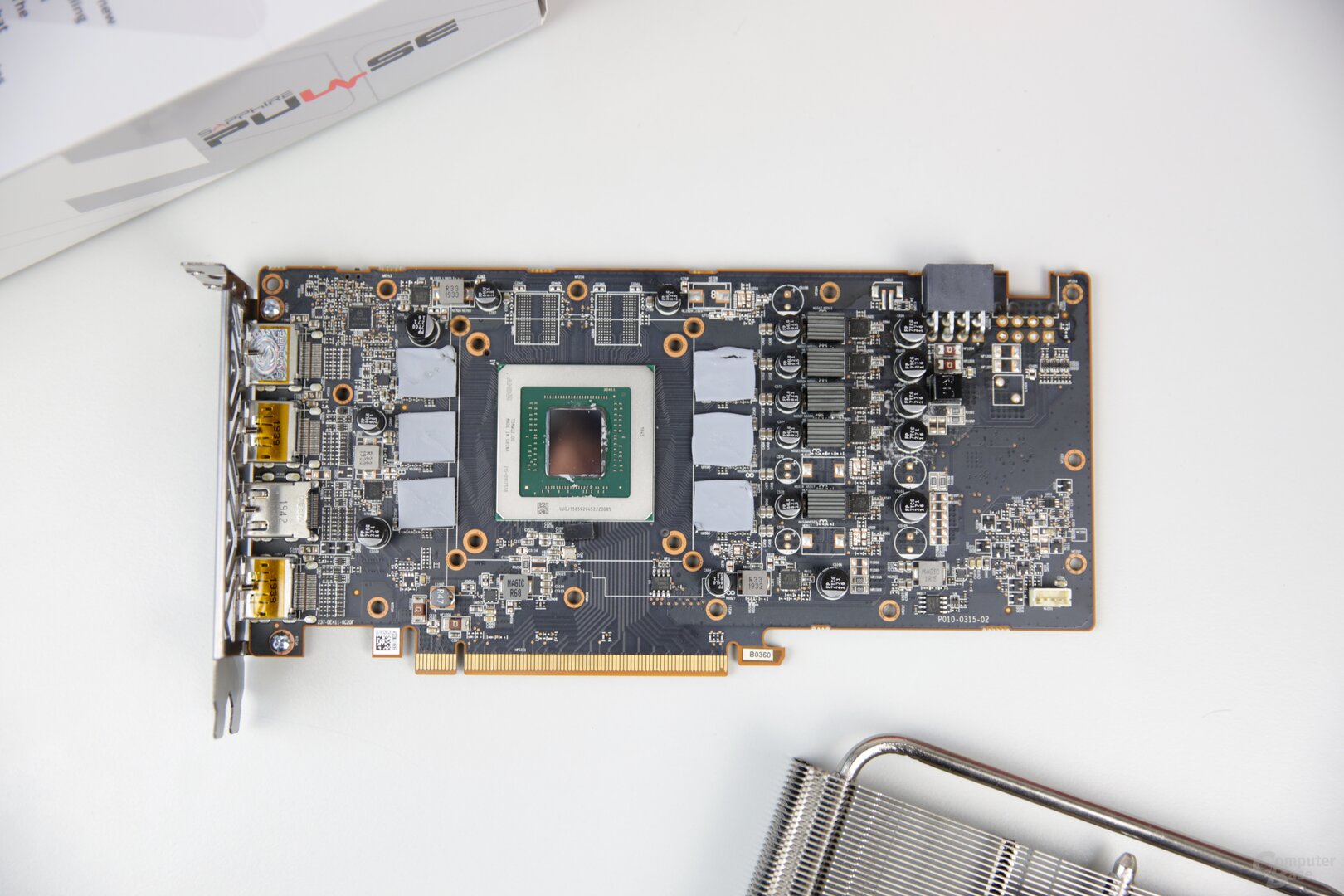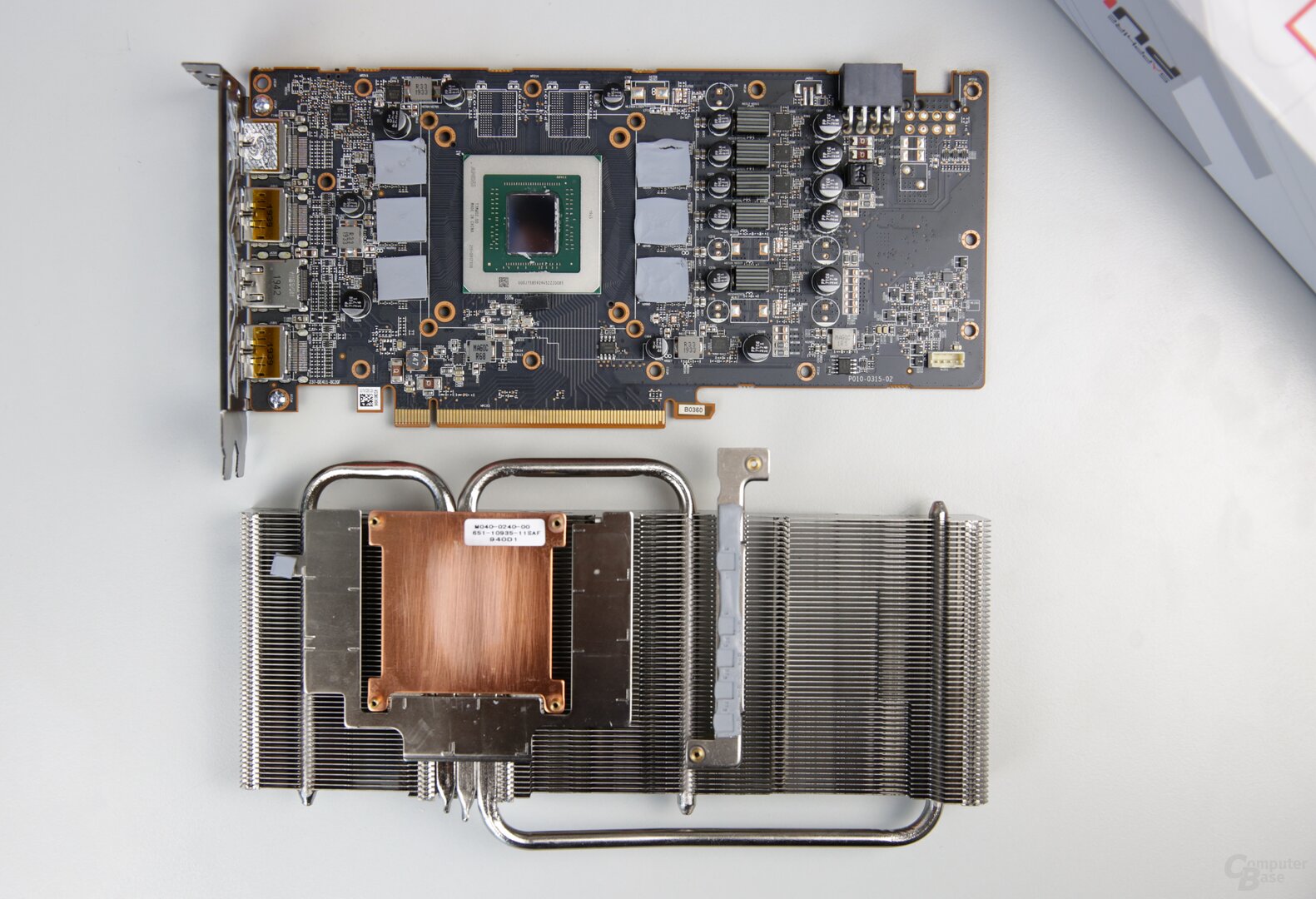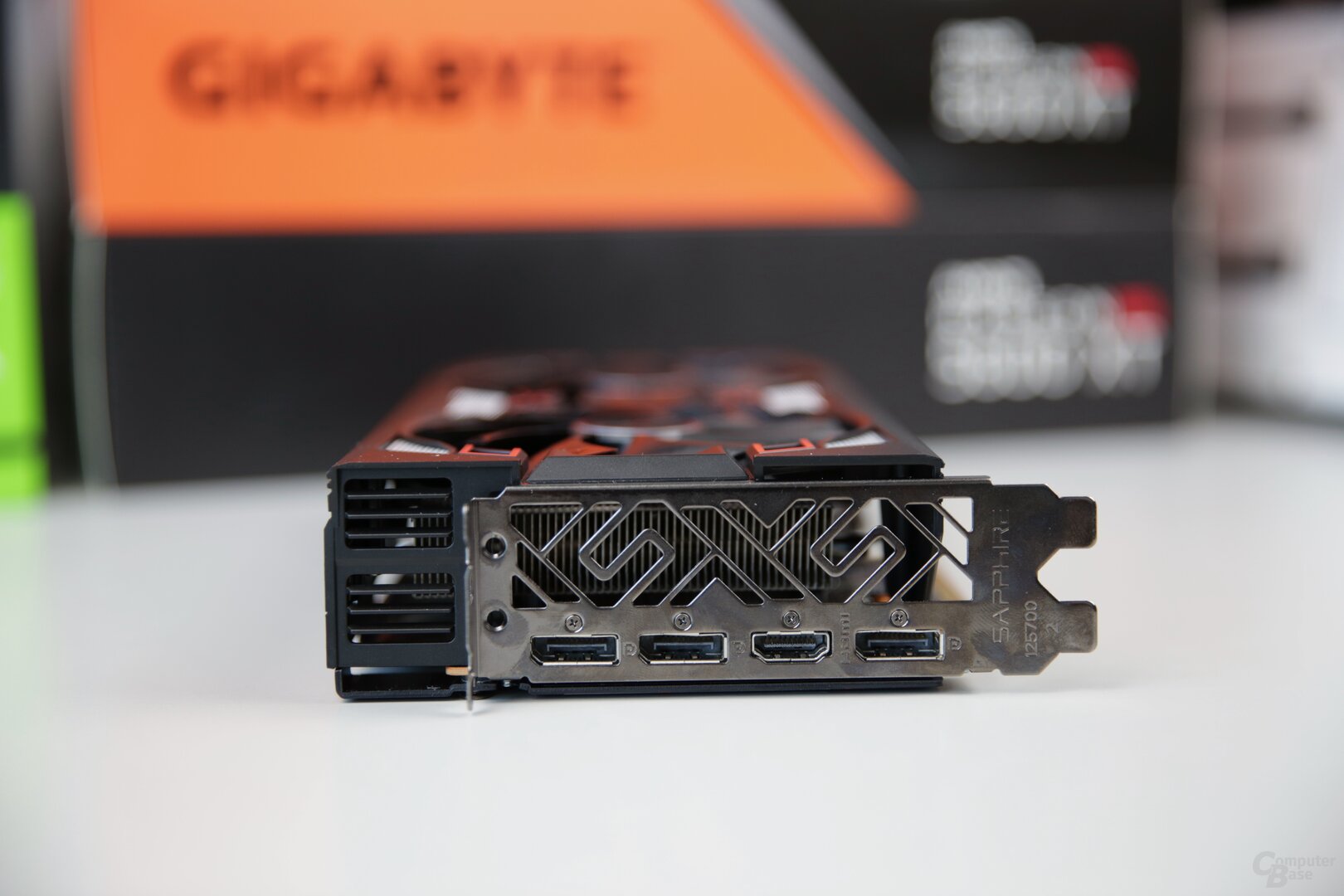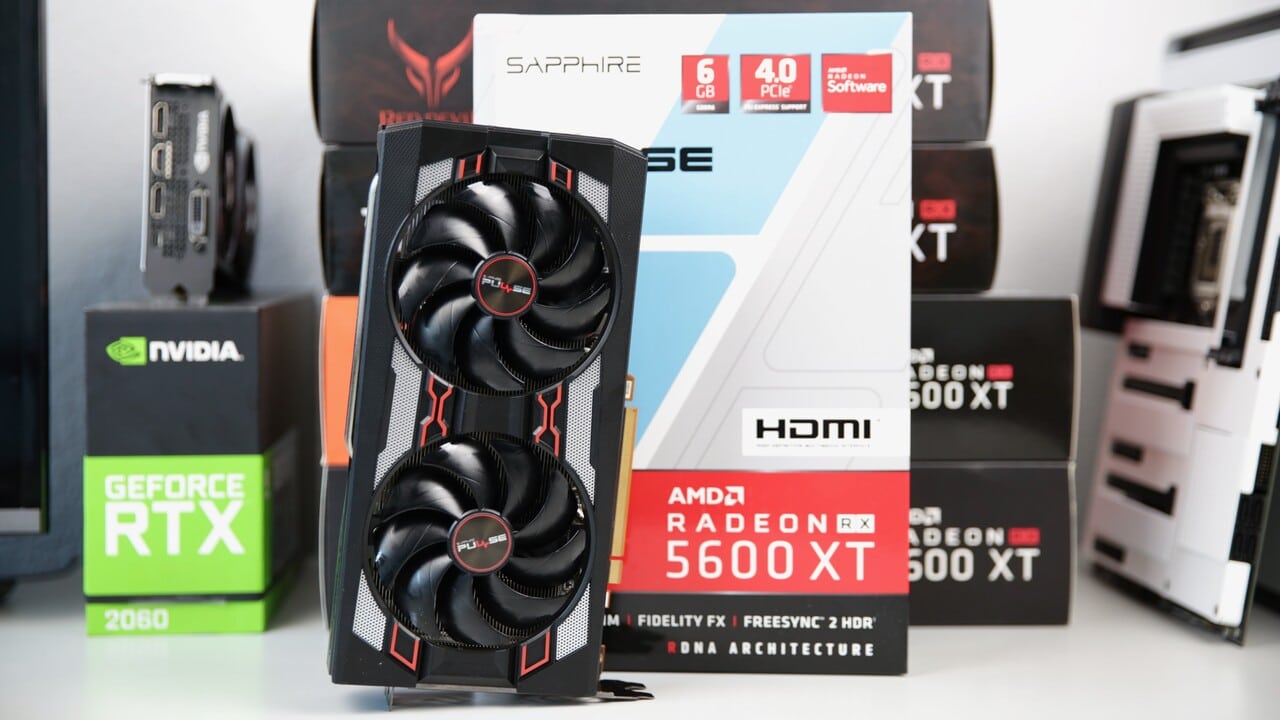– With the Radeon RX 5600 XT, AMD is placing a graphics card at eye level with the Nvidia Geforce RTX 2060. Both take nothing for performance, offer (only) 6 GB and cost a comparable amount. In order for AMD to come close to the GeForce RTX 2060, however, a BIOS update was necessary that surprised even partners.
Smaller changes shortly before the presentation of a new graphics card are rare, but there are occasionally. The end customer usually does not notice this and there is never anything more than, for example, a slightly adapted fan control via BIOS or driver.
A new last minute BIOS
AMD also announced a new BIOS for the Radeon RX 5600 XT a few days before the market launch and also distributed it for the official test sample at short notice. Board partners followed over the weekend or still have to deliver. In this case, the BIOS not only changes marginal parameters, but directly and significantly affects the performance of the graphics card if the partner wants it.
In a nutshell: AMD announced the graphics card with a "total board power" of 150 watts, a typical game clock of 1,375 MHz and 6000 MHz memory clock. And important: With these from CEO Dr. Lisa Su in Las Vegas specifications officially remain!
Behind the scenes, however, AMD has allowed partners (and there will only be partner cards) to allow the GPU to take up more power and run at higher speeds if desired. In addition, the memory can be addressed with up to 7,000 MHz, previously 6,000 MHz was set. A look at the new and old primary BIOS of the Sapphire Pulse shows the changes. They significantly move the performance of the graphics card on paper towards the Radeon RX 5700.
All of the following considerations and benchmarks were carried out with the final BIOS. However, more details on the changes initiated by the BIOS and a look behind the scenes are provided in the section More clocks with the new BIOS at the last minute.
Radeon RX 5600 XT vs. GTX 1660 Super vs. RTX 2060
According to AMD, the Radeon RX 5600 XT announced at the CES should officially take on the GeForce GTX 1660 Super and be the perfect 1080p graphics card. However, the final product is now capable of more: Nvidia's GeForce RTX 2060 is also achieved in terms of performance. No wonder that Nvidia already lowered this model a few days ago.
As with the Radeon RX 5700 (XT), AMD achieved the goal with the Navi 10 GPU, which even has exactly as many units as the Radeon RX 5700 without "XT". The memory interface, on the other hand, has been cut, which significantly reduces the bandwidth. And instead of 8 GB, only 6 GB can be found on the Radeon RX 5600 XT. AMD sets a price of 299 euros for the product, so that the graphics card is in direct competition with the GeForce RTX 2060. The Radeon RX 5700 officially costs 369 euros, but is now available from 309 euros.
The Sapphire Radeon RX 5600 XT Pulse in the test
For the test, the Sapphire Radeon RX 5600 XT Pulse and thus the basic model of the manufacturer have found their way – the Nitro + model will probably be used at a later date. The Radeon RX 5600 XT Pulse for PCB and cooler is based on the Radeon RX 5700 Pulse, so that thanks to its lower power consumption, quiet operation should be possible.
Even though the rumors of the Radeon RX 5600 XT have for a long time sealed up their own GPU, after the Radeon RX 5700 XT and the Radeon RX 5700 AMD relies on Navi 10 for the third time. 36 of the physically available 40 compute units are activated on the GPU , which results in 2,304 shader units – exactly as much as on the Radeon RX 5700. A difference in performance should result in other adjustments, but after the BIOS intervention, it is actually only one depending on the partner card. Another concerns storage capacity.
Less (and slower) memory
A 64-bit memory controller was deactivated, which is why the memory interface is only 192 bits instead of 256 bits wide and the memory bandwidth is a third lower with the same clock rate. The lack of a controller makes an 8 GB memory expansion impossible. The Radeon RX 5600 XT therefore only offers 6 GB, which is nothing unusual for Nvidia, but is a first for AMD – with Polaris, 8 GB RAM at AMD have been in this class for years. Officially, the clock drops from 7,000 to 6,000 MHz, but partners can also go back to 7,000 MHz.
The clock rates also drop significantly in the specifications published by AMD compared to the Radeon RX 5700. However, partner cards with a new BIOS show that the difference is not that big.
The Sapphire Radeon RX 5700 Pulse in detail
Partners can implement the Radeon RX 5600 XT on the platform of the Radeon RX 5700 and that is exactly what Sapphire does with the Radeon RX 5600 XT Pulse. Finally, it is a Radeon RX 5700 Pulse with a different BIOS, fewer memory chips and a slightly different configuration of the board (e.g. 5 + 1 + 1 instead of 7 + 1 + 1 voltage converter circuits) for the price of 299 euros. That being said, everything is identical. The Sapphire Radeon RX 5700 Pulse currently costs 329 euros in retail.

The Radeon RX 5600 XT Pulse is comparatively compact, but the graphics card is not small either. Above all, the model is quite high at 13.5 cm. An eight-pin power connector is still required for operation.
With the Dual-X cooler, there is no difference between the two models. There is only one large aluminum cooling block, but copper is in direct contact with the Navi-10 GPU. Three heat pipes ensure faster heat transfer. Two axial fans with a diameter of 95 mm are responsible for the fresh air and stand still at low GPU temperatures. There is an aluminum backplate on the back.

The primary BIOS also overclocked memory significantly
Sapphire has equipped the Radeon RX 5600 XT Pulse with two different BIOS versions. The final version of the alternative BIOS is based on AMD's specifications. The game clock is specified at 1,460 MHz, the boost clock at up to 1,620 MHz. The GPU is allowed a maximum of 135 watts, which is a value that the graphics card with the alternative BIOS simply does not achieve.
The primary, factory-active BIOS deviates massively from this and therefore also from AMD's reference specifications, because Sapphire makes intensive use of the BIOS restrictions loosened by AMD shortly before the launch. For the primary BIOS of the Radeon RX 5600 XT Pulse, a game clock of 1,615 MHz and a maximum boost of 1,750 MHz apply and thus a sharp plus of 240 MHz or 190 MHz for reference. In addition, the memory is "overclocked" from 6,000 MHz to 7,000 MHz. And the GPU can use up to 160 watts. So there's a pretty big performance difference between the two BIOS versions.

That being said, the Radeon RX 5600 XT Pulse is a fairly simple graphics card. There are no special features and the RGB lighting is simple with the Sapphire lettering. Monitors can be controlled by three DisplayPort 1.4 outputs with DSC compression or an HDMI 2.0b connection.
On the next page: The clock rates and benchmarks in Full HD and WQHD















